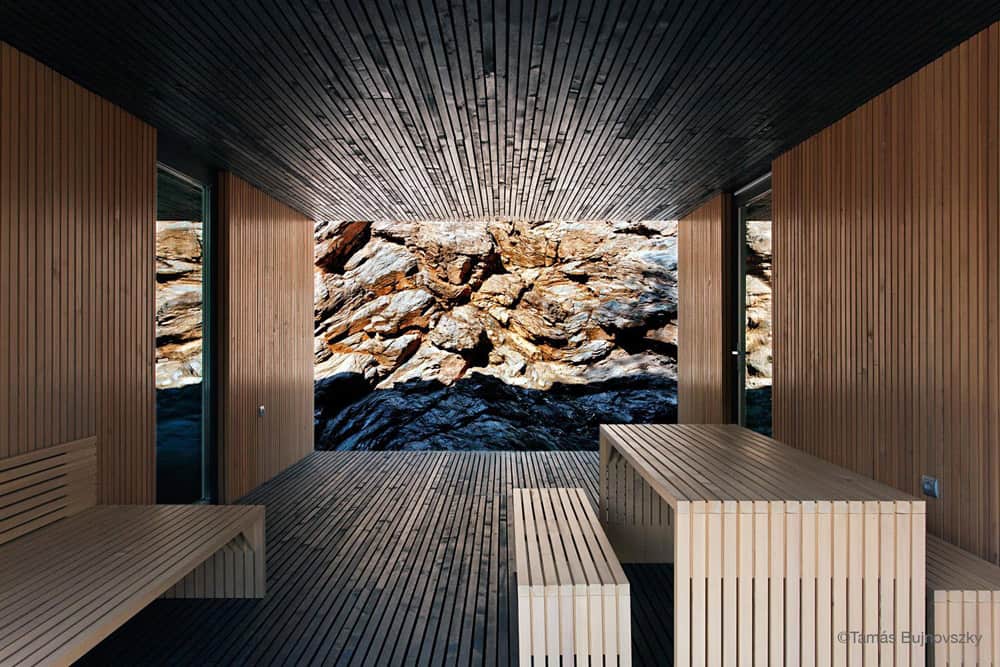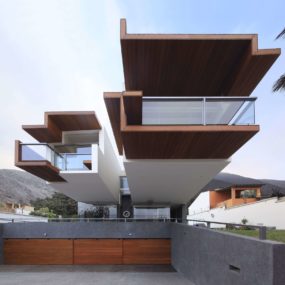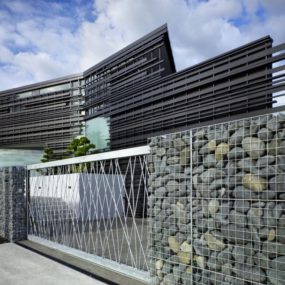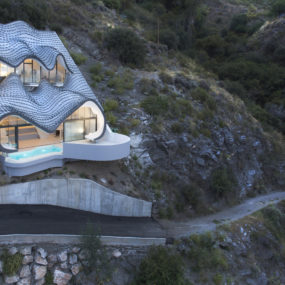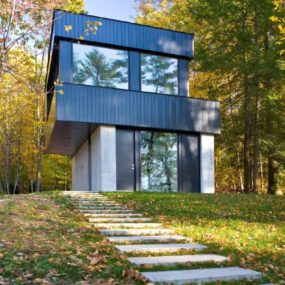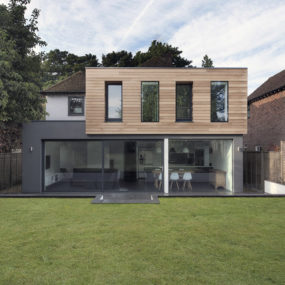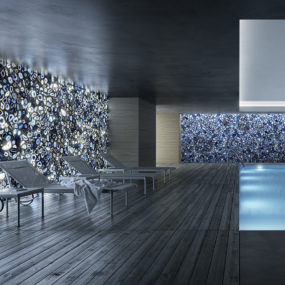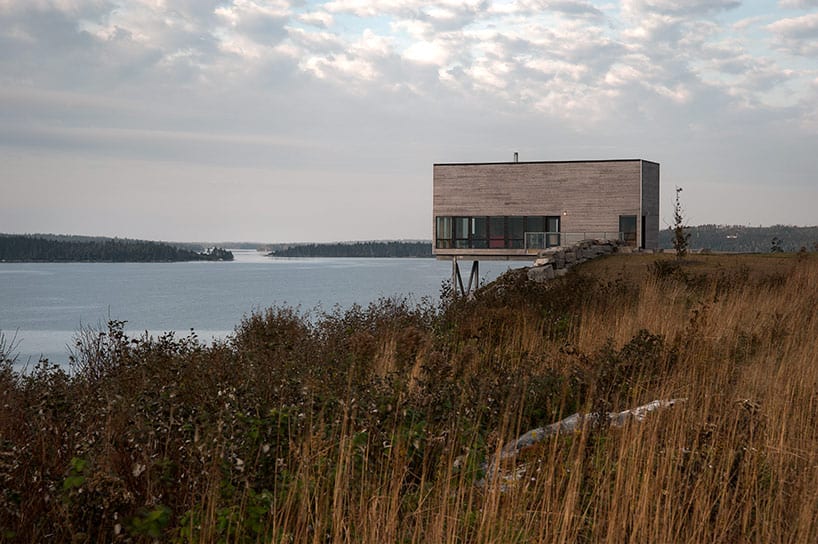
Designed by MacKay-Lyons Sweetapple Architects, this Canadian bestowed with three different architectural awards from both private and governmental organizations. Set on a cliff-side estate property in Nova Scotia, the house rises high above its wild surroundings, an artificial focal point in a natural world. Half of the building is suspended off the edge of the cliff face, and its entire structure is engineered to provide strong support for that section without the need for a large, distracting truss structure below it. The isolated residence is lined with story-height windows on its farthest edge, providing near-panoramic views of the stunningly untouched world around it. Though its shape is simple overall, the chosen wood finish and the details of the design (include an intelligent deck and asymmetrical window placement) diversify it and help it seem more like a home and less like a study in slope structure.
Inside, the dwelling is actually much more diminutive than the exterior may suggest. The architects claim a total usable floorspace of less than a thousand square feet, with about half of it present in a combined living space. The house was designed for a couple, so no more than a single bedroom is necessary, set in a loft-like area above the bathroom and entryway. Since there are so few defined and separated rooms, much of the interior volume is kept open in form; the main living area is a full two stories in height despite only having single-story windows. The uncolored wood planks of the second story help to make the expansive room feel cozy, muting the negative aspects of an open-form interior. Like an expanded version of the trendy micro-apartments found around the world, this home’s interior opens space by combining each room’s uses.
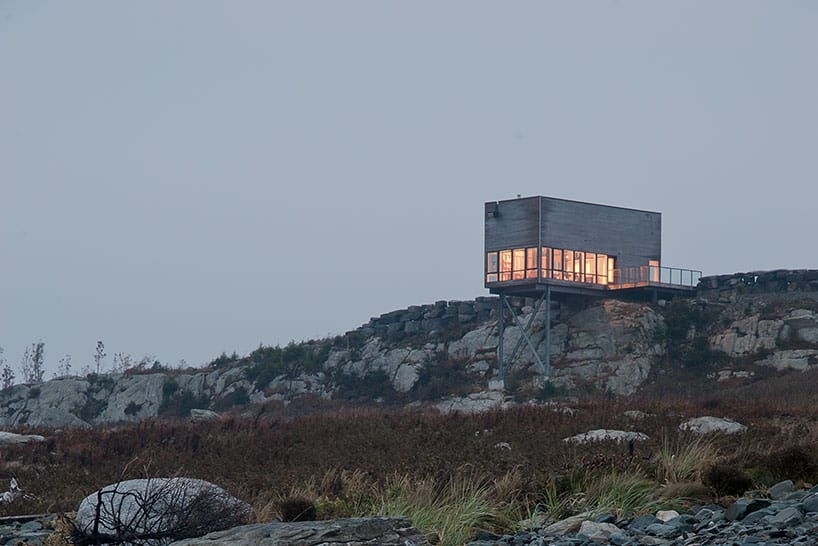
From certain angles, the tall building almost looks like it’s sitting fully on top of the cliff, but from others its hanging nature is extremely apparent. There’s no angle, however, at which the house is not a clear and defining feature of the environment around it.
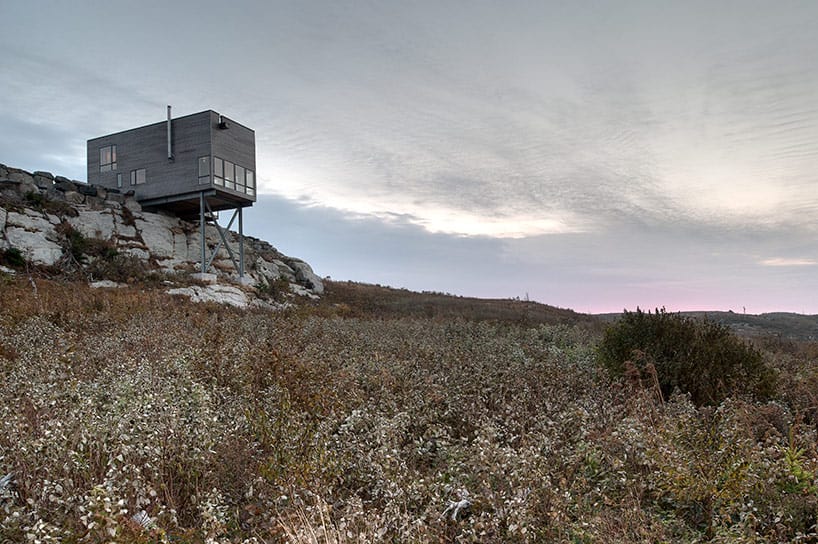
Despite its decidedly squared-off design and its intentional visual separation from its surroundings, the dwelling still retains some elements of the land around it, finished in a grey wood finish reminiscent of the cliff rocks and sharing brutal beauty with the cliff face.
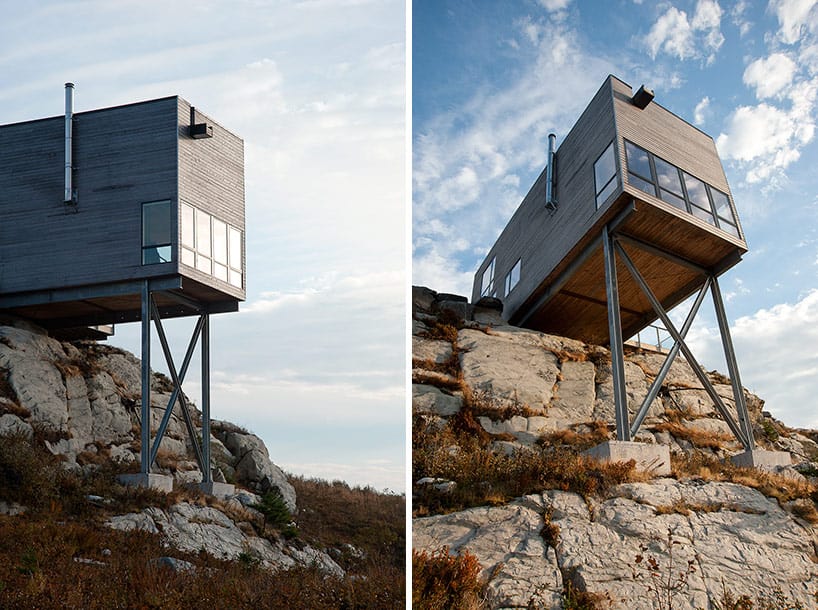
The beam structure supporting the hanging house of the structure was envisioned to be as minimal as possible, almost invisible from sideways on. Combined with a strong girder system within the boxy house, this solidly-anchored grid keeps the jutting half stable.
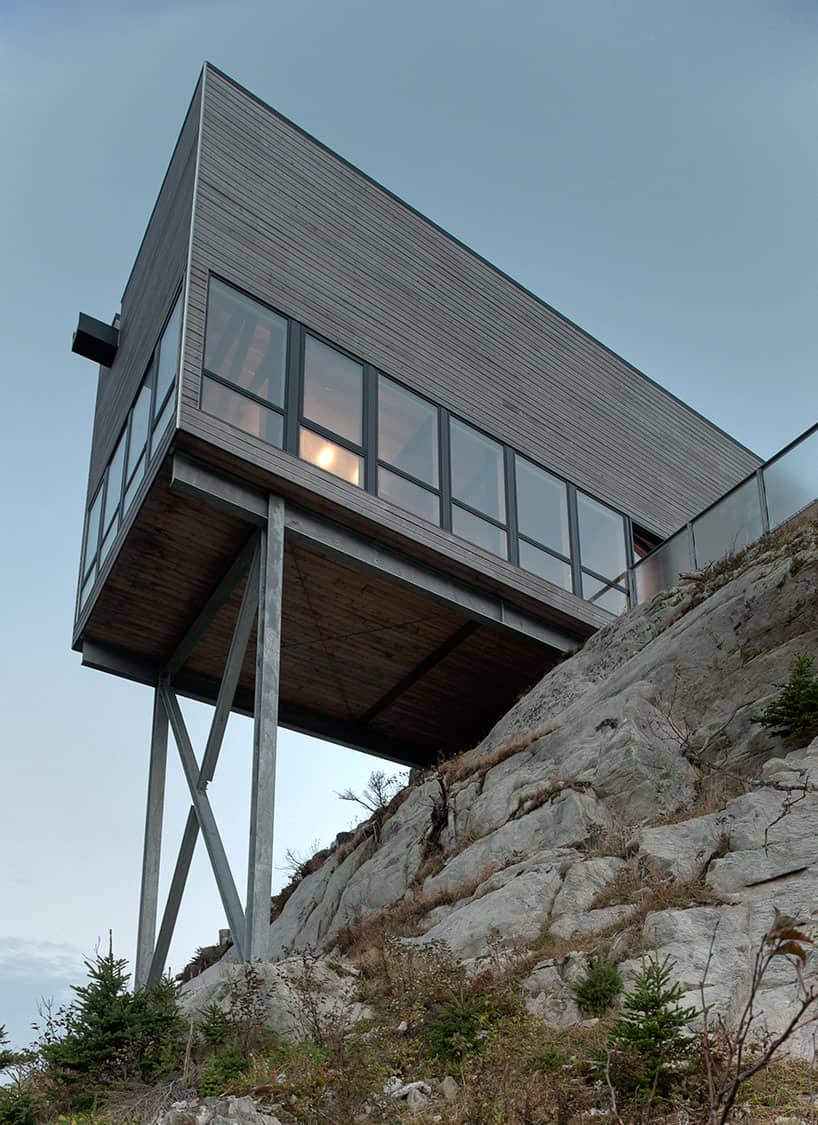
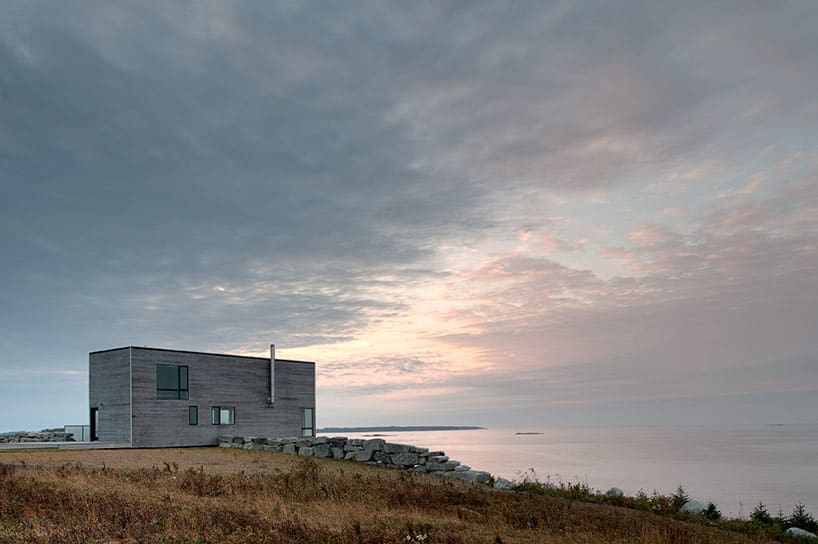
Warm light emanates from the home whenever it’s occupied, invoking a sense of comfort and combining with the building’s chimney and wood covering to humanize its otherwise stark appearance.
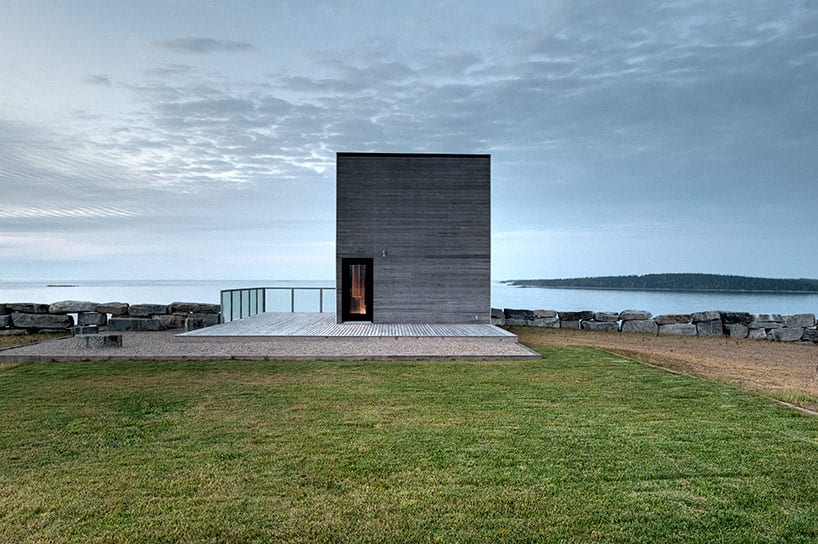
The entrance side of the home, its least cluttered side, is formatted much like a public park, with a grassy yard and a picnic area. A side deck gives stunning views of the water without having to step through the house to reach them.

The property that the warm abode is built on is expansive, covering hundreds of acres of Canadian waterfront property. This provides the utmost privacy, and eliminates design constraints often posed by the presence of neighbors.
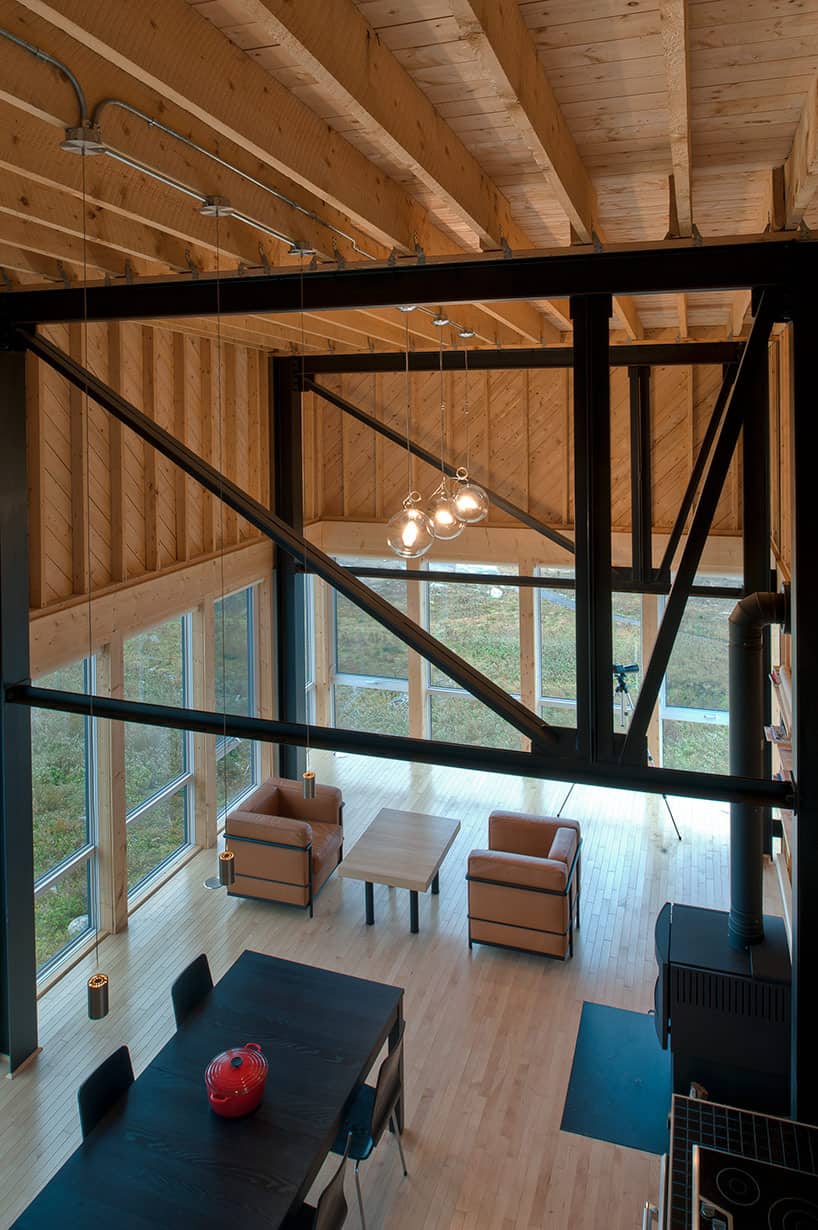
The actual floorspace of the home is smaller than its tall and long profile might suggest, since most of its interior volume is made up of a single two-story living area encompassing the kitchen, dining room, and living room. Its one bedroom occupies the rear half of the upper floor, not visible in this photograph.

Instead of being grey, the wood on the inside is light and warm. The truss structure retains its dark coloration, however, providing visual contrast.
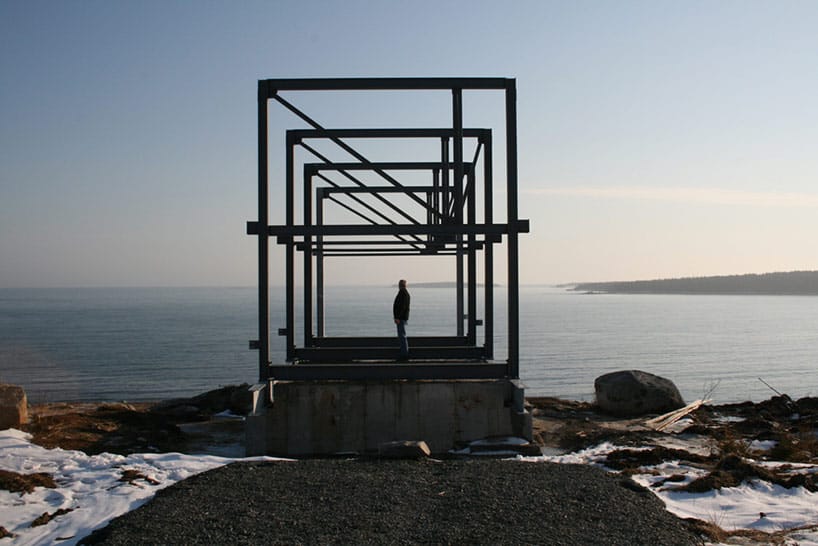
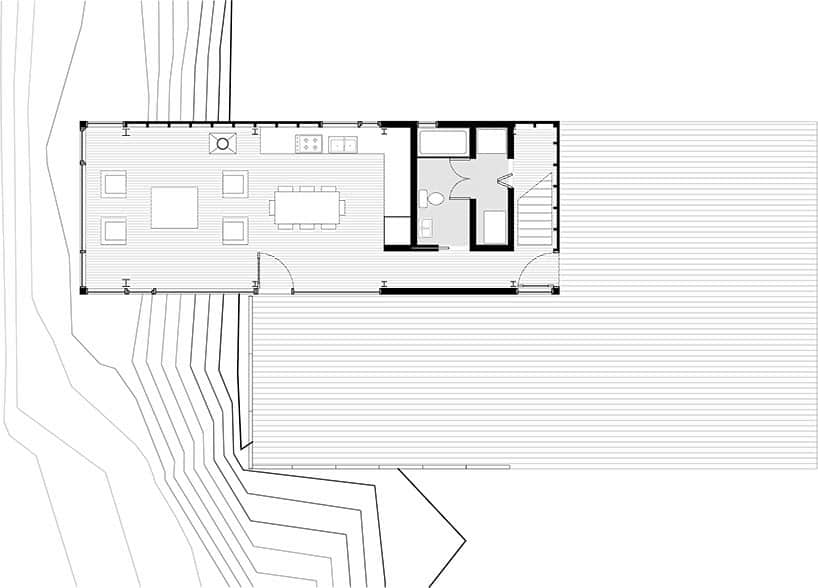
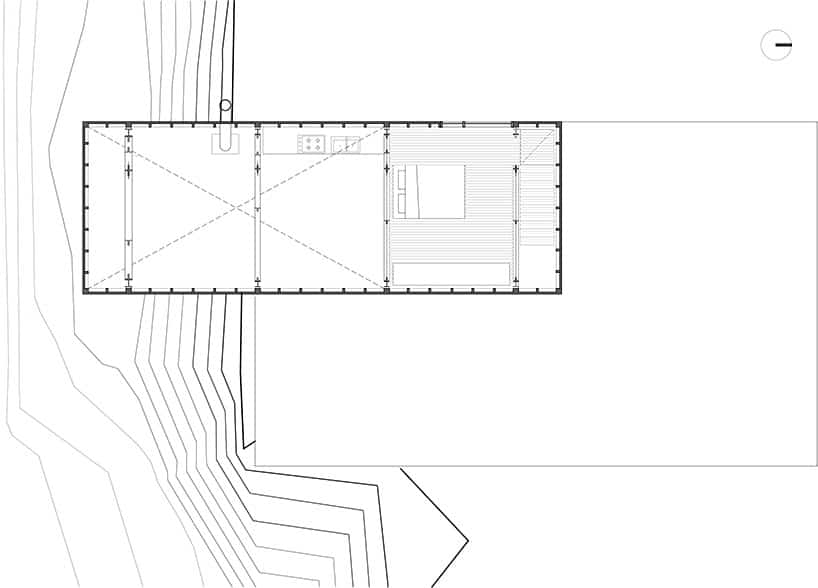
Though it’s located at the home’s entrance side, the bedroom still has impressive views out a large side window on the most picturesque side of the building.
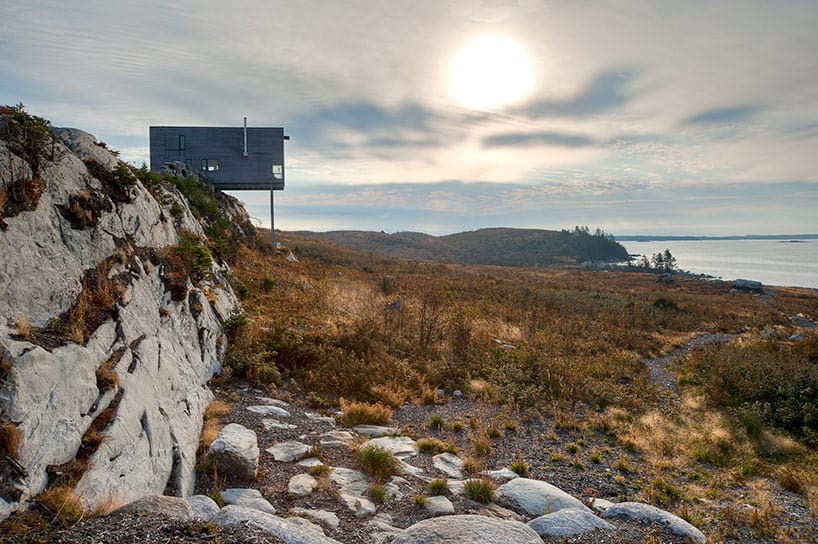
MacKay-Lyons Sweetapple Architects
